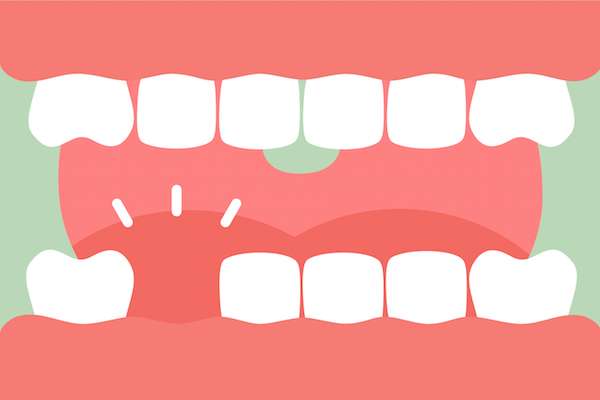Tooth extractions are some of the most common procedures that a performs. In fact, the American Dental Association includes extractions on its list of most frequently reported dental procedures. Because many patients undergo this treatment, it is important to understand when it is needed. Because patients should play a key role in their own dental health, the dentist and patient should always have a clear discussion about available options before choosing any treatment. In this way, the patient can feel confident about seeking necessary care.
3 times a family dentist recommends extracting a tooth
A family dentist typically recommends pulling a tooth when it is deemed nonrestorable, causing obvious infection, or causing an alignment problem.
1. Severe decay
When a cavity gets so large that it can no longer be restored, an extraction is the only option. In some cases, the tooth may be badly broken, and often, only the root tips are left. A family dentist recommends removing teeth in this condition because they are simply sources for infection to take hold. There are a number of restorative options available for missing teeth, and the patient can discuss these with the dentist before extraction. A severely decayed tooth is usually unsightly, so patients are often eager to have it removed and replaced.
2. Infection
Although dental infections are somewhat common, these can be quite dangerous if left untreated. If a family dentist detects a badly infected tooth, they may recommend an extraction. Dental infections are often detected by an X-ray. The patient usually presents with a toothache, but sometimes, the infection causes no symptoms at all. The infection can drain into the mouth, and many patients report a foul taste. An infection may arise from a decayed tooth, or it can happen after some type of trauma to the area. Antibiotics may be prescribed before extraction to reduce the amount of infection, but this is left to the dentist's discretion.
3. Crowding
Patients who are interested in orthodontics may need some extractions if the teeth are too crowded. The first premolars are the most common teeth to be removed for orthodontic treatment. These extractions are sometimes required for both traditional braces or clear aligner therapy. Patients should discuss the benefits of extractions for straighter teeth but should also know what the results will be like if certain teeth are not extracted. In some cases, adolescents may have retained baby teeth. These must be removed before or during orthodontic therapy to allow the permanent teeth to erupt correctly.
Conclusion
Every patient is unique, and a family dentist may recommend extractions for many reasons. The important thing is that patients understand why pulling a tooth is necessary and what care will be needed after the procedure. Patients concerned about oral health should visit a dentist for a comprehensive treatment plan. Dedication to good oral health is an important step in overall health.
or call Brimhall Dental Group at 661-249-1122 for an appointment in our Bakersfield office.
Recent Posts
Establishing a relationship with a family dentist offers numerous long-term benefits for maintaining oral health. By providing comprehensive care for patients of all ages, a family dentist ensures continuity of treatment, early detection of potential problems, and education that fosters a lifetime of healthy habits. Investing in regular visits to a family dentist is an…
Routine dental checkups are just as important as brushing and flossing when it comes to oral health. Visiting a family dentist is a smart and convenient option that can provide a number of important advantages for the whole family and help to ensure you all maintain healthy teeth and gums.Some people may assume that there…
Oral cancer occurs inside the mouth and is so often called mouth cancer or oral cavity cancer, and a family dentist will usually check for this disease during routine dental visits. However, if you are experiencing abnormal mouth pain, lumps, or lesions before your next exam, it may be a good idea to schedule an…


